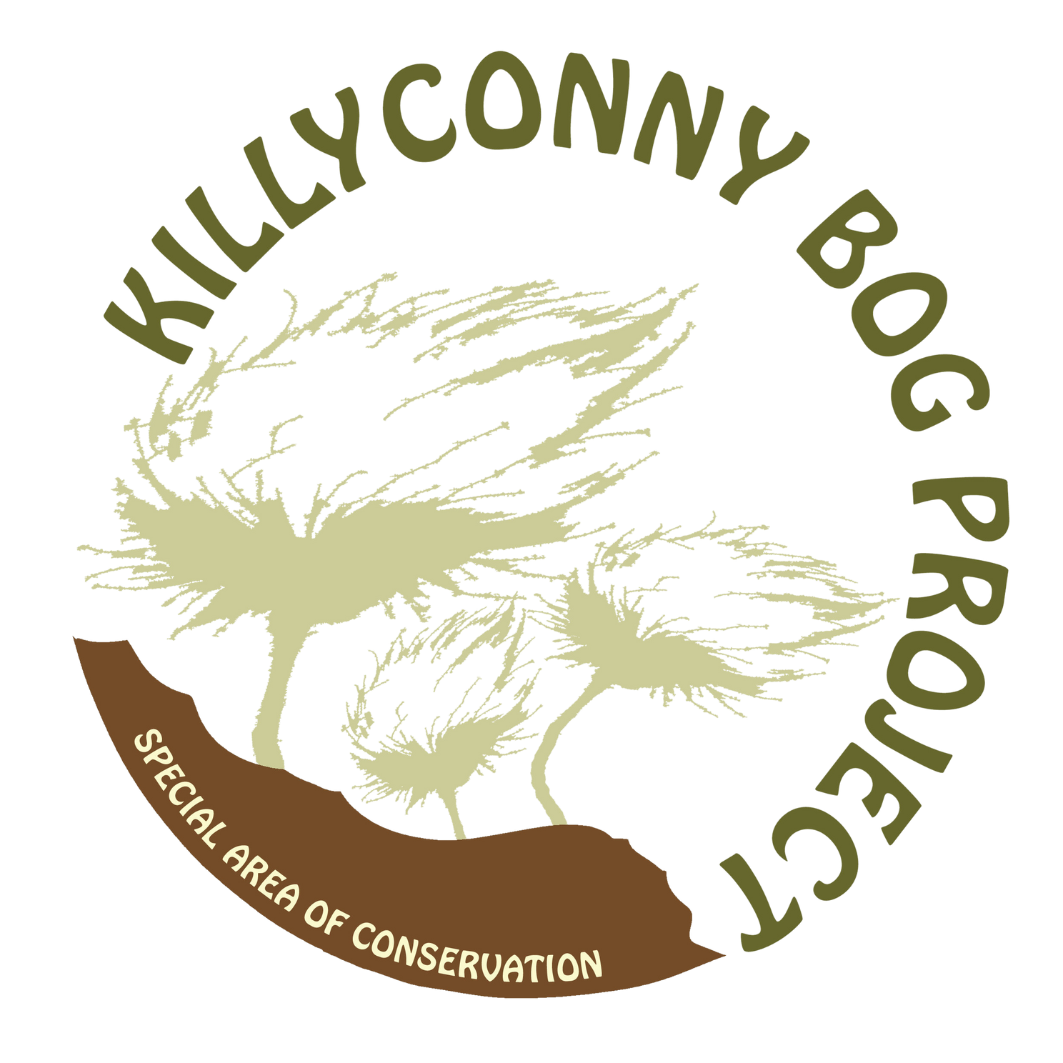Killyconny Bog Flora
From the Simple to the Sophisticated.
Over 90% of the bog is water and much of the rest is like a very big, slowly rotting sponge. Underneath and at the surface consists of simple plants which have no flowers or roots – the Sphagnum mosses. They are great survivors in these acidic, nutrient poor, very wet conditions. Other simple plants with no flowers or roots are liverworts, lichens and other mosses. These conditions allow other very specialized plants to survive.
Much of the surface of the high bog is covered with pink flowered Ling and Cross-leaved heathers. Also the yellow flowered Bog Asphodel, the Cottongrasses, the White beak-sedge, Deergrass, and the rarer Bog Rosemary, each have adaptations to survive in this tough environment. The heathers have small curled leaves to reduce water loss in a dry summer or harsh winters. Bog Asphodel, the Sedges and Grasses recycle their nutrients from young leaves to old, drawing the minerals into the older parts of the plant for the winter.
Most remarkable of all are the plants that “eat” animals to get nutrients to help them grow. The Sundews trap insects with sticky glands on their leaves and slowly digest them. In some of the ponds grows the Lesser Bladderwort, with lovely pale yellow flowers – don’t be deceived – under water they have bladders that trap small animals to provide nutrients.
Over 150 species of plant have been recorded on the Bog so far and for sure more will be found.
Andromeda polifolia Bog Rosemary
Lichen
Bog Rosemary
Heather
Bog Pool
Bog Rosemary
Round Leaved Sundew
Bog Cotton Eriophorum angustifolium
Bog Pool
Bog Rosemary
Bog Cotton
Calluna vulgaris Ling Heather
Cladonia Lichen(1)
Erica tetralix Cross Leaved Heath
Eriophorum angustifolium Common Cottongrass
Sphagnum Moss
Sphagnum Bog Moss
Round Leafed Sundew
Narthecium ossifragum Bog Asphodel
Matchstick Lichen
Drosera rotundifolia Round Leaved Sundew
Erica tetralix Cross Leaved Heath
Fly Agaric
Fly Agaric
Tremella Mesenterica



























